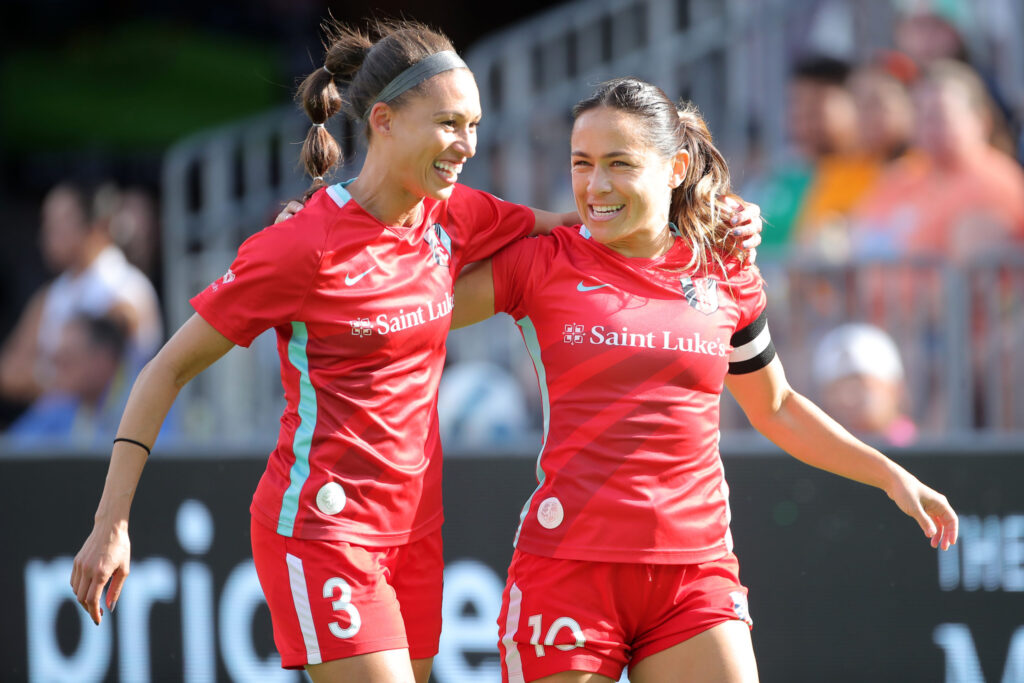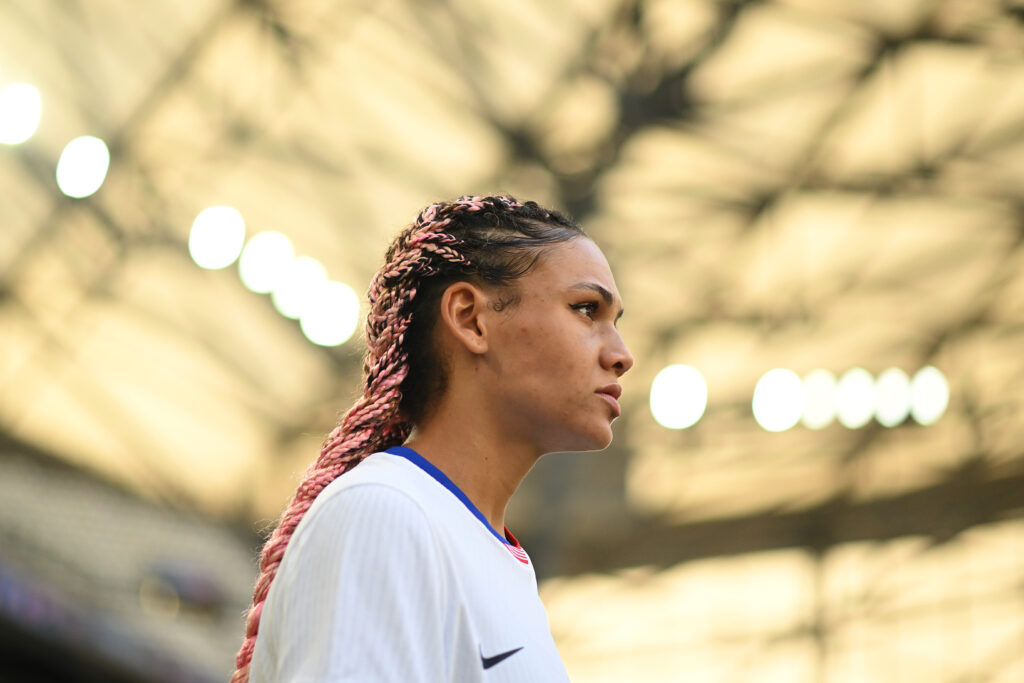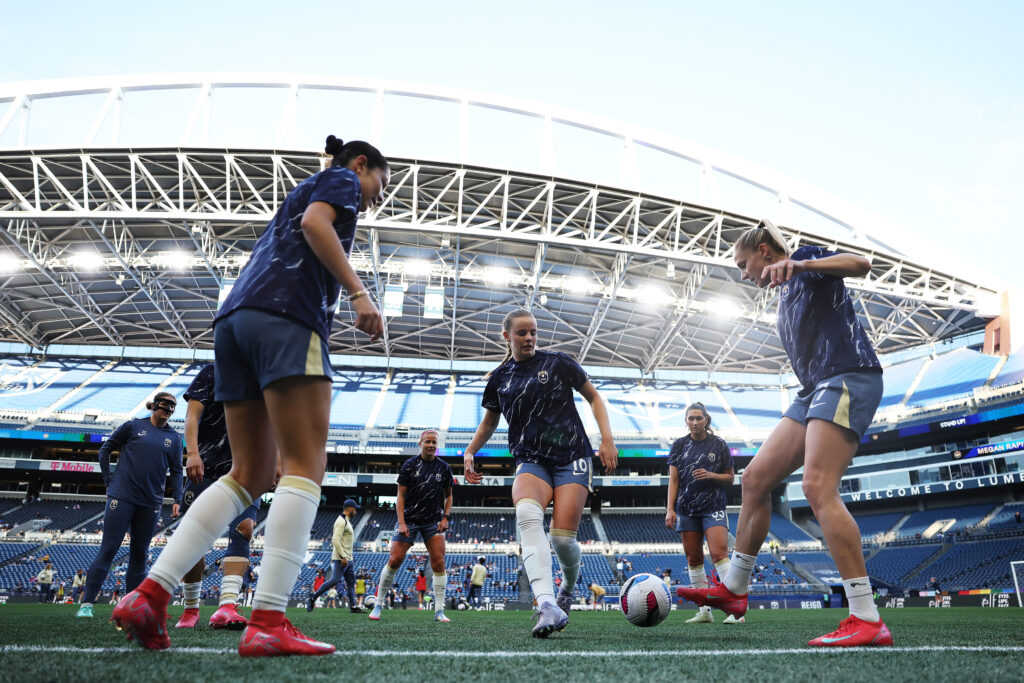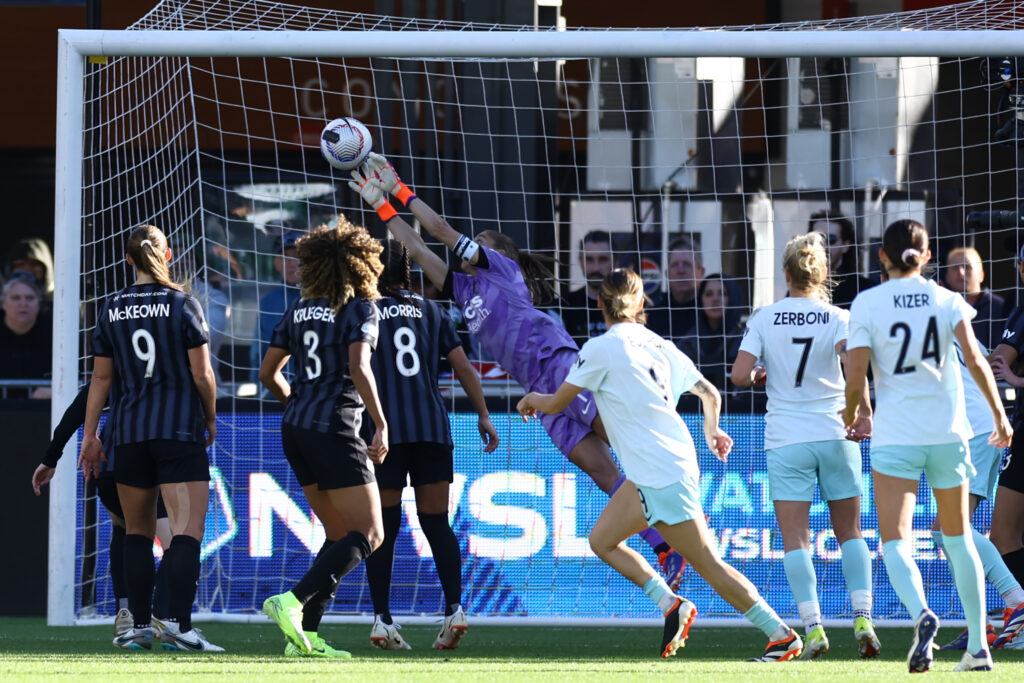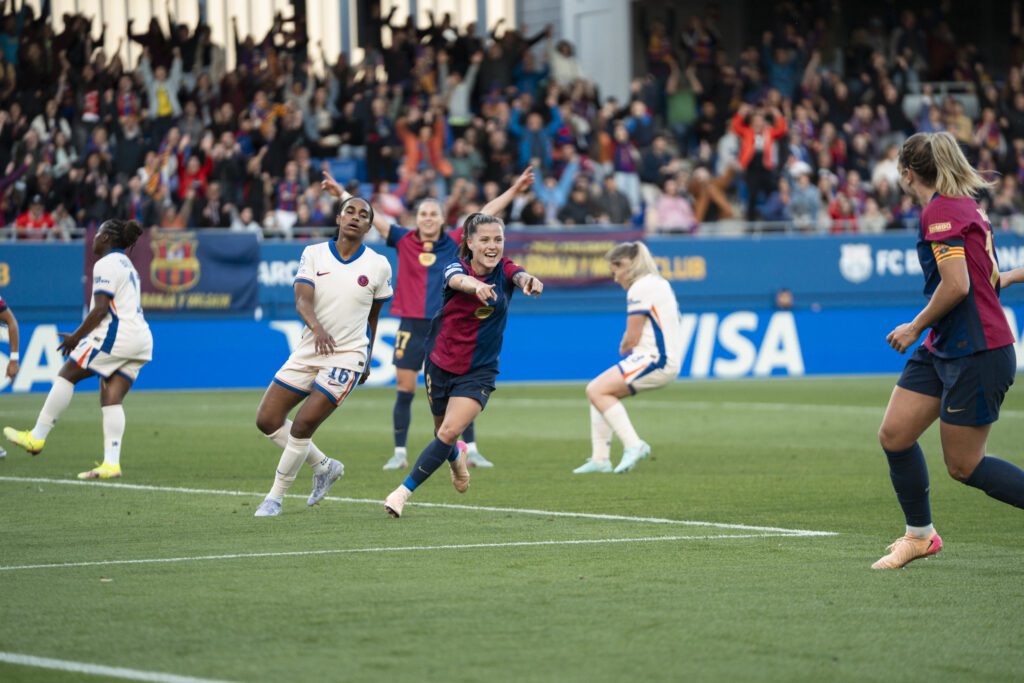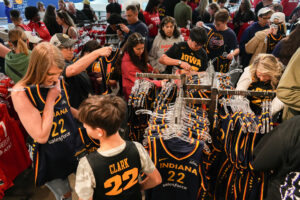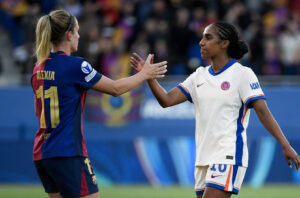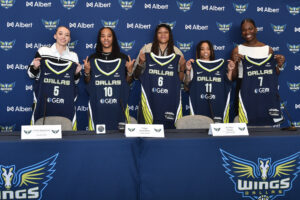There is no perfect way to start a playoff game, but a fifth-minute penalty kick opportunity is pretty close.
Kristen Hamilton earned it, in a sequence where the Kansas City forward appeared to get fouled more than once as she entered the 18-yard box in the Current’s 2-1 quarterfinal win over the Houston Dash on Sunday. When Lo’eau Labonta roofed the kick from the spot to give the Current a very early lead, the proverbial trumpets of destiny sounded.
All season, the Current have been game-state tacticians, uniting around an ethos to achieve a short-term goal. At times, that has meant either chasing a lead, fighting from a goal down or simply testing the waters in an even competition. The result is a cohesive sort of chaos, wherein Kansas City tries to disrupt the status quo to win, despite giving up goals more than they’d like to on the other end.
The best way to describe the Current is as a team full of gamers. They probably don’t relish putting themselves in a position to have to rise to the occasion, but it’s not a role they’re afraid of either.
From the opening whistle on Sunday, both teams pushed the tempo in an effort to come out on top of the transitional battle. The Dash couldn’t quite execute their chances early on, which left room for the Current on the counterattack.
Kansas City’s penalty evoked a scene from the 2020 Challenge Cup final, when Houston’s own penalty kick goal in the fifth minute set the stage for their 2-0 win and the first trophy in club history.
The Dash made more history in 2022, appearing in the playoffs for the first time. What they found in the postseason was an incredibly difficult task, with a result that hangs in the balance of the smallest of margins.
It's celly time! An icy PK finish from @L0momma gives KC an early lead!#TealRising | @thekccurrent pic.twitter.com/rNTRos9AU9
— National Women’s Soccer League (@NWSL) October 16, 2022
Kansas City’s go-ahead goal and subsequent Rockefeller-style kick-line celebration lent an air of inevitability to their victory, but Houston didn’t forget their own principles in the moment. In front of a record crowd at PNC Stadium, the Dash’s comfort on the ball was evident, particularly with María Sánchez taking defenders on with confidence.
At the same time, Houston was forced into some positional adjustments, including slotting in Natalie Jacobs on the right flank. In the first half, the Dash didn’t always seem on the same page, and the Current’s hyper-talented left wing of Hamilton and Hailie Mace made life difficult. But Sanchez was undeniable, wearing Kansas City down on Houston’s own left flank to earn a corner that led to Sophie Schmidt’s half-volley equalizer in the 21st minute.
What a hit from @sophieschmidt13 to tie it up!!! 🔥@HoustonDash | #HoldItDown pic.twitter.com/LQ5Vb157TE
— National Women’s Soccer League (@NWSL) October 16, 2022
From there, momentum started to bend in the direction of the Dash. Houston, however, finished the match with 20 shots but only five on goal, while Kansas City had six total shots and three on goal. Goalkeeper of the Year frontrunner AD Franch came up huge for the away team to keep Houston off the board. Dash manager Juan Carlos Amorós also made a questionable substitute in the 76th minute, replacing star striker Ebony Salmon with Elizabeth Eddy in what he later described as a tactical choice.
It’s easy to focus on Houston’s inability to break the deadlock, but the story of the second half lies within the margins of Kansas City’s off-the-ball defense. Kristen Edmonds proved essential as a 1v1 defender in key moments, backed up by Franch and Elizabeth Ball. The Current’s preferred three-back formation leaves outside center-backs vulnerable to individual battles with attackers, and the defenders’ willingness to try different tactics and put their bodies on the line bled into the Kansas City midfield on Sunday.
With Desiree Scott serving a red-card suspension, rookie Alex Loera had another strong match in the defensive midfield and fellow rookie Elyse Bennett acclimated well after Claire Lavogez exited with an injury. Lavogez couldn’t put weight on her leg as she came off in the 51st minute, and her injury seemed indicative of Kansas City’s experience even in victory.
Head coach Matt Potter decided to ride the game out with the players who had gotten the team this far, and outside of a number of excellent individual efforts, the Current struggled physically as the minutes ticked by. They squeaked out the win, but perhaps at a price for their semifinal matchup next Sunday against Shield winners OL Reign.
The quarterfinal contest looked destined for extra time, when Kate Del Fava stunningly put the game away in the 10th minute of stoppage time. In the last kick of the game (and the latest regulation goal in NWSL history), Del Fava ushered her team into the semifinals and left Houston with more questions about their quest to get over the top.
CAN YOU BELIEVE IT?! Kansas City wins it in stoppage time!!!#TealRising | @thekccurrent pic.twitter.com/LzzpTKeKRI
— National Women’s Soccer League (@NWSL) October 16, 2022
All season, the Current have seemed like dark-horse NWSL championship candidates, and getting through a game as tricky as this one could be step one to completing the fairytale.
Kansas City paid physically for this win, but they also did just enough to give themselves a chance at their next upset. When you’ve got a team that can handle anything, there’s likely very little that will make their opponent feel comfortable — all the way to the last minute of stoppage time.
Claire Watkins is a Staff Writer at Just Women’s Sports. Follow her on Twitter @ScoutRipley.
